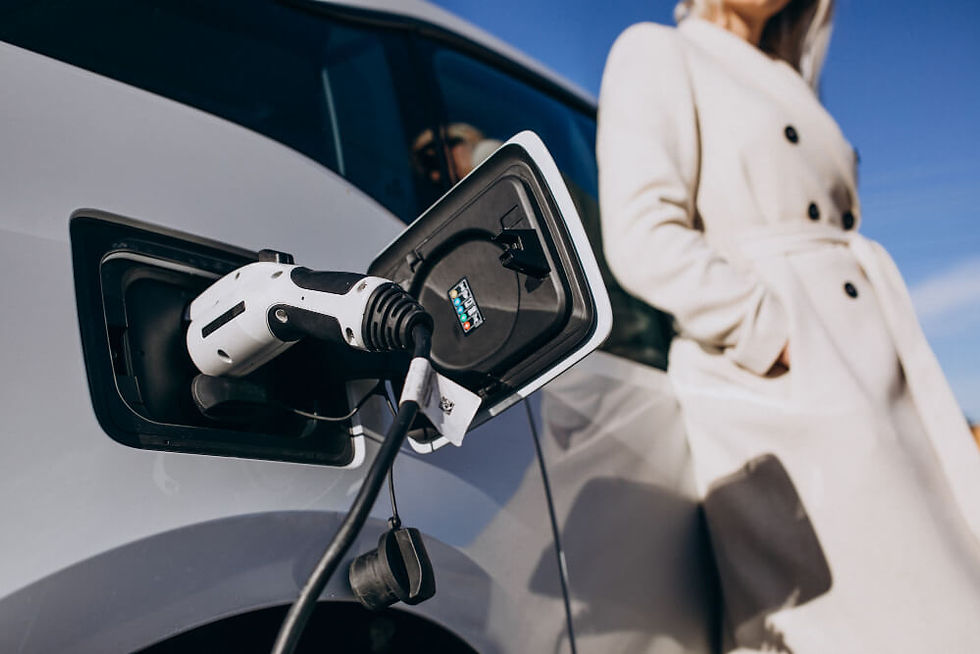Top Features to Look for When Installing EV Chargers at Home
- Social Media
- Jan 28
- 3 min read
Installing an EV charger at home is a fantastic way to embrace convenience and prepare for a more sustainable future. However, navigating the variety of features available can feel overwhelming if you’re unsure where to start. Choosing the right EV charger involves more than simply picking the first one that catches your eye. To make the process smoother and more effective, knowing the essential features can save time and effort while ensuring your charging experience is hassle-free.
Let’s break down the top features you should focus on for seamless EV charger installation, all in a simple and easy-to-read format.

1. Charging Speed Options
One of the most crucial features is the charging speed of your EV charger. Look for models that support faster charging times without overwhelming your home’s electrical setup. Understanding the difference between Level 1 and Level 2 chargers can help you decide based on your daily driving habits and energy needs.
Having a charger that balances speed and efficiency makes your EV charging experience seamless. Keep your future needs in mind when exploring these options, as you might want to accommodate newer vehicles with larger batteries down the line.
2. User-Friendly Connectivity
Many modern EV chargers offer advanced connectivity features like smartphone apps and Wi-Fi support. These tools allow you to monitor your charging sessions, schedule charging times, and check real-time updates from your phone.
Connectivity isn’t just about convenience—it also helps you manage energy consumption more effectively. A charger that’s easy to control with a mobile device can save you from unnecessary trips to check its status manually.
3. Adjustable Power Settings
Flexibility in power settings is another great feature to look for when planning your EV charger installation. Some chargers let you adjust the output to match the capabilities of your home’s electrical system.
This feature comes in handy if you need to charge during peak electricity usage times or want to manage your monthly energy expenses efficiently.
4. Safety Features
Prioritize safety when installing an EV charger. Look for chargers equipped with safety mechanisms like temperature monitoring, automatic shutoff, and overcurrent protection.
These features help minimize the risk of electrical issues and keep your charging setup safe for your vehicle and home.
5. Weather Resistance
If your EV charger will be installed outdoors, weather resistance is a must-have feature. Chargers built to withstand rain, dust, and extreme temperatures offer long-term durability.
Choosing a unit designed for outdoor use ensures reliable charging performance in varying weather conditions.
6. Cable Management
Tangling cords can be frustrating. Opt for chargers with efficient cable management features, such as retractable cords or wall-mounted systems.
A neatly managed cable setup reduces tripping hazards and ensures that your charging area stays tidy and organized.
7. Ease of Installation
Some chargers are designed to be plug-and-play, while others require professional installation. Depending on your comfort level with DIY projects, look for a charger that matches your preferred installation process.
An EV charger installation doesn’t have to be complicated, but ensuring the setup aligns with your home’s electrical system is key to hassle-free operation.
8. Future-Proof Compatibility
Select a charger compatible with a variety of EV models. This way, you can charge multiple vehicles in the future without worrying about upgrades or replacements.
Future-proofing your EV charger installation makes it a long-term solution rather than a temporary fix.
Final Thoughts
Installing an EV charger at home doesn’t have to be overwhelming. By focusing on key features like charging speed, safety measures, and user-friendly design, you can create a setup that meets your current and future needs.
Whether it’s your first time or an upgrade, these insights will help you navigate EV charger installation confidently and effectively. Happy charging!
FAQs
Q1: Can I install an EV charger on my own?
Installing an EV charger can be a DIY project if it comes with plug-and-play functionality and matches your current electrical capacity. For more complex installations, consulting a professional electrician is recommended.
Q2: How much space do I need for EV charger installation?
The required space depends on the charger model and cable length. Ideally, install the charger where your vehicle can be parked close to an electrical outlet without strain on the cord.
Q3: How do I know if my home’s electrical system can handle EV charger installation?
Before installation, evaluate your home’s electrical panel capacity. Most Level 2 chargers require a 240-volt outlet. Consulting an electrician for an assessment is a smart way to ensure compatibility.







Comments